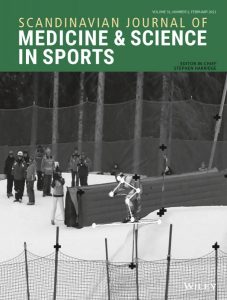Publications

The effects of hamstring training methods on muscle viscoelastic properties in healthy young individuals
Authors: Özgün Uysal, Kıvanç Delioğlu, Tüzün Firat
Affiliations:
Faculty of Physical Therapy and Rehabilitation, Hacettepe University, Altındağ, Ankara, Turkey
Journal: Scandinavian Journal of Medicine & Science in Sports - February 2021, Volume 31, Issue 2, Pages 371–379 (DOI: 10.1111/sms.13856)
-
Field & Applications:
- Sport
- Injury prevention
- Fatigue / Overtraining
This study investigated the effects of hamstring training methods on the passive viscoelastic properties of hamstring and quadriceps muscles and the relationship of these properties to lower extremity power, hamstring flexibility, and agility. A total of forty healthy individuals were recruited for this study. Participants performed Nordic hamstring exercises (n = 14), hamstring curl exercises (n = 14), or received neuromuscular electrical stimulation (NMES; n = 13) for eight weeks. Measurements were taken both before and one week after the interventions of the viscoelastic properties of hamstring and quadriceps muscles, strength, flexibility, agility, and lower extremity power. Nordic hamstring exercises increased hamstring muscle elasticity while decreasing quadriceps and hamstring muscle stiffness; whereas leg curl exercises increased quadriceps and hamstring muscle stiffness while decreasing quadriceps muscle tone (P < .05). Both strengthening methods increased agility, hamstring flexibility, and vertical jump. NMES produced no noticeable effects. Eccentric and concentric training methods had inverse effects on both hamstring and quadriceps muscles’ viscoelastic parameters, but had similar improvements on performance parameters. Since changes in viscoelastic parameters of muscle could affect musculotendinous systems’ compliance, clinicians should consider viscoelastic properties over performance parameters, when prescribing concentric or eccentric exercises.
Keywords: electrical stimulation, hamstring muscles, resistance training


